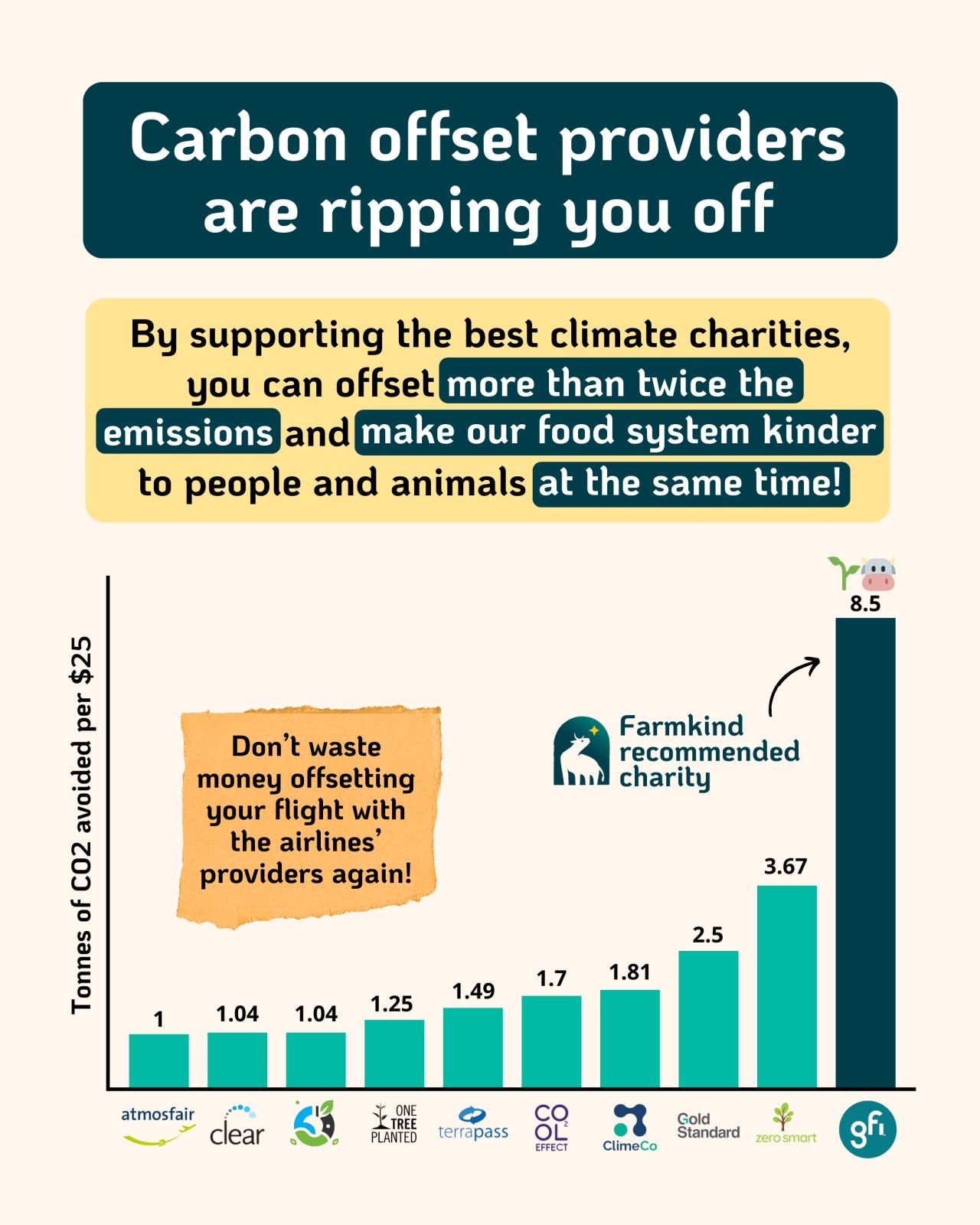Cutting beef to help the climate? How to avoid doing more harm than good
4 minute read — September 9th 2024
You’ve probably seen graphs like this.. and heard about how beef is particularly damaging to the climate.
Maybe you’re considering—or have already decided—to cut down on or eliminate beef from your diet. (I made that choice too during the Fridays for Future period, when there was a lot of focus on climate action and I felt the need to do my part). If you are, I think that's great! It's not every day that people care this much about the climate and take personal steps to reduce their environmental footprint.
🚨 The bad news is, if you are not careful you might be doing more harm than good 🚨 In fact, if you replace beef with chicken (or fish, or other small animals), the final impact might not be as positive as you hoped..
The small animal replacement problem
Since you are reading this article I’m pretty sure you care about the environment. But I also bet you dislike animal suffering. Unfortunately, while replacing beef with chicken is good for the environment, the same cannot be said about animal suffering. And there are two simple reasons why:
Size
You may have noticed that chickens are much smaller than cows. An average chicken produces around 1.7kg of meat, while a cow produces around 360kg1
ChatGPT's depiction. As always, it makes less sense the more you look at it.
The same problem applies to other small animals, like fish and shrimp — you'd need over 20,000 shrimp to match the meat produced from a single cow2
Welfare conditions
Unfortunately, the problems don’t stop there: smaller animals tend to face harsher farming conditions than larger ones. For example, nearly all of the chickens are factory farmed3
So, if we also care about animals as well as the environment, reducing beef consumption in favor of smaller animals might make things worse overall, or at least be a "win-lose" situation.
Don’t despair: There are solutions!
So, what should we do?
There isn’t a one-size-fits-all answer, and the best choice depends on your priorities and values. Let’s look at the options
When you have to make trade-offs, make smart ones 🧠
If you want to replace beef with other animal products, consider both climate impact and animal welfare when making your decision. This might lead you to choose pork and dairy over chicken and fish, for example.
Take the win-wins when you can get them 🏆
Replace less, and eat plants more: Of course, reducing overall meat consumption will reduce your environmental footprint and prevent animal suffering at the same time. Some people choose to go all-in on this path and go vegan, but that’s not so simple for everybody.
Even without going fully plant-based, consider eating more legumes, nuts, fruits, and vegetables. If these aren’t already part of your regular menu, experiment with tofu and tempeh, which are rich in protein and offer numerous health benefits. Because of their neutral flavor, you can use them in many recipes with various seasonings. I think they’re some of the best foods most people aren’t eating yet.
Replace with plant-based meat: This is another great alternative to beef: it has a much lower environmental impact and can be quite tasty, allowing you to enjoy familiar flavors without the high carbon cost. Moreover, despite what the beef-lobby says, there is some evidence that it is often healthier than beef. This is a win-win-win situation: for the climate, your health and animals!
If none of this is for you, that’s completely understandable. But this doesn’t mean you can’t have a real positive impact on the environment and animal suffering. You have one more option:
Use donations as a cheat code to balance the scales ⚖️
Help more animals than you eat: If you’re not willing to make changes to your diet right now, or if you suspect that the changes you already made mean that you’re eating more small animals, you could use donations to help animals as much as your diet harms them with FarmKind’s Compassion Calculator. Donating to top rated animal charities can improve conditions for thousands of farmed animals and eliminate some cruel farming practices altogether.
Offset your carbon: Instead of cutting emissions by switching from beef to chicken, you could continue eating beef while offsetting its higher carbon footprint.
But don’t waste your money with the big carbon offset providers.. what they offer just doesn’t stack up.
You can offset more carbon per $ and help animals at the same time by donating FarmKind’s Climate Fund. (See the working behind this here).
This could also be seen as a sort of a win-win situation.
In fact, the great thing about donations as opposed to diet change is that changing your diet can only help the climate and animals as much as your diet affects them, where as donating can allow you to do even more, such that you don’t just offset your footprint but turn it positive!
Final thoughts
Your diet can be a great way to reduce your environmental impact and animal suffering (even though the two do not always go hand in hand). The same goes for your donations and other actions you can take. By carefully weighing these options, you can make choices that better align with your goals and values, while making a meaningful difference for the planet and its inhabitants.
Thanks for everything you do to make the world a better place, and thanks for reading!




